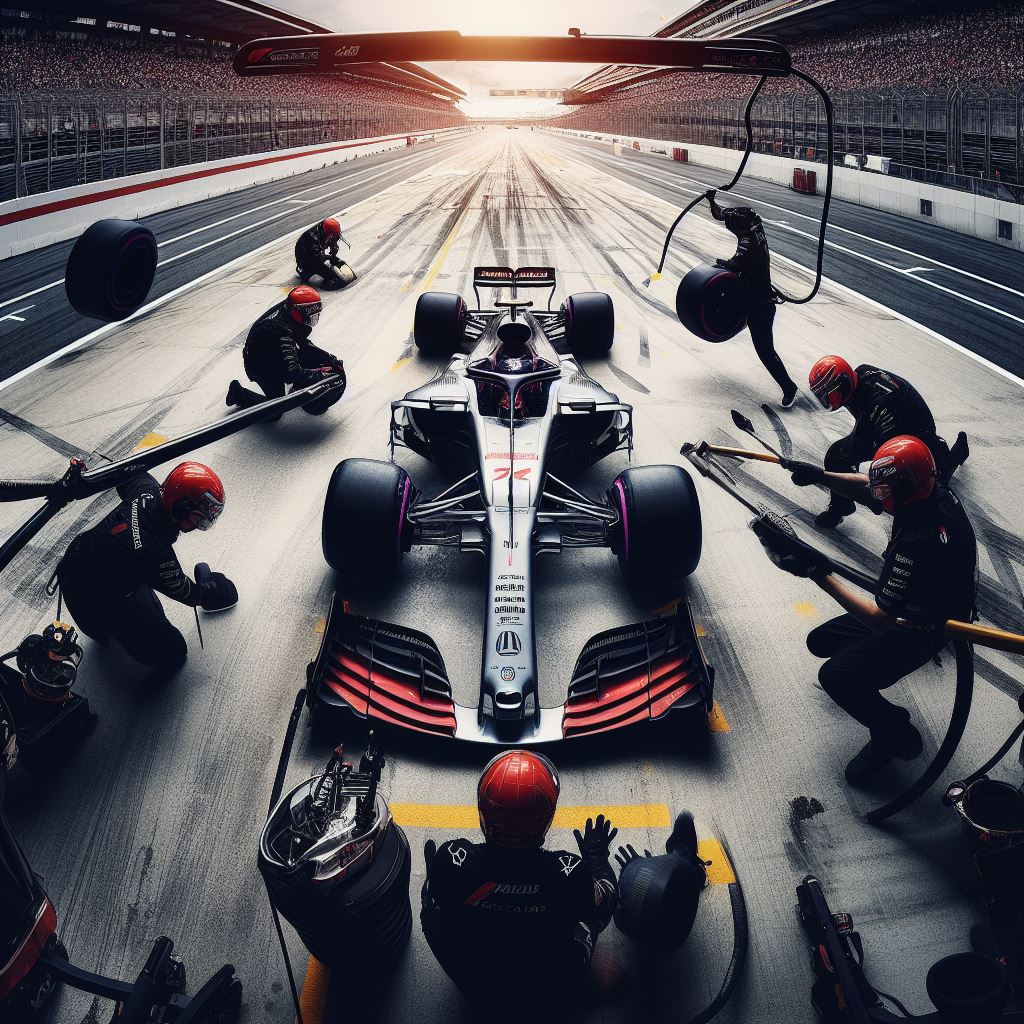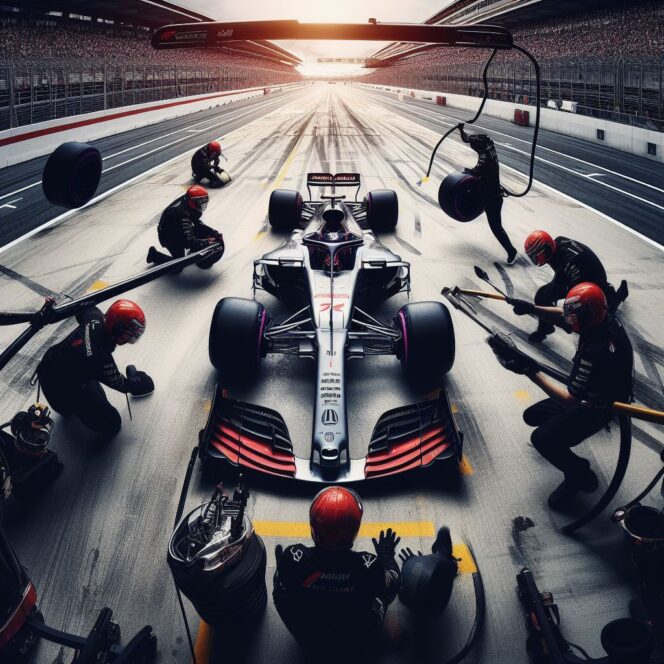Introduction
In the Pit Stop: F1 Pit Crew – Formula 1 is one of the most exciting and competitive sports in the world. Every race, the world’s best drivers push themselves and their machines to the limit. But what about the pit crews? These unsung heroes play a vital role in the success of every team.

F1 pit stops are some of the most impressive feats of teamwork in sports. In just seconds, a team of mechanics can change all four tires, refuel the car, and make any necessary adjustments. This is a complex and dangerous operation, but the best pit crews in the world can do it consistently and flawlessly.
In this blog post, we’ll take a behind-the-scenes look at everything that goes into an F1 pit stop. We’ll also discuss the different roles that each mechanic plays, and the challenges that they face.
Planning and Preparation
Pit stops are carefully planned and prepared before each race. The team’s engineers will analyze the track layout and the weather conditions to determine the best pit stop strategy. They will also calculate the amount of fuel that the car will need to complete the race.
Once the strategy has been determined, the pit crew will practice pit stops in the garage. This is essential for developing muscle memory and ensuring that everyone knows their job. The team will also practice pit stops in the pit lane during race weekend. This allows them to get used to the conditions and to identify any potential problems.
The Pit Stop
When it’s time for a pit stop, the driver will pull into the pit box and stop precisely in front of the waiting pit crew. The crew will then immediately spring into action.
The front jackmen will raise the front of the car, while the rear jackmen will raise the rear. The tire changers will then quickly remove the old tires and fit new ones. The front wheel gunners will then tighten the front wheel nuts, while the rear wheel gunners tighten the rear wheel nuts.
Once the tires have been changed, the fueler will refuel the car. The fueler must be very careful to avoid overfilling the tank, as this could cause a fire.
If any other adjustments need to be made to the car, such as a nose change or a wing change, the mechanics will do this during the pit stop.
Once the pit stop is complete, the front jackmen and rear jackmen will lower the car. The driver will then pull out of the pit box and continue the race.
The Pit Crew
The pit crew is made up of a team of highly skilled mechanics. Each mechanic has a specific role to play in the pit stop.
- Front jackmen: The front jackmen are responsible for raising the front of the car.
- Rear jackmen: The rear jackmen are responsible for raising the rear of the car.
- Tire changers: The tire changers are responsible for removing the old tires and fitting new ones.
- Front wheel gunners: The front wheel gunners are responsible for tightening the front wheel nuts.
- Rear wheel gunners: The rear wheel gunners are responsible for tightening the rear wheel nuts.
- Fueler: The fueler is responsible for refueling the car.
- Mechanics: The mechanics are responsible for making any other necessary adjustments to the car, such as a nose change or a wing change.
Challenges
Pit stops are a complex and dangerous operation. There are a number of challenges that the pit crew faces, including:
- Speed: Pit stops need to be completed quickly in order to minimize the amount of time that the car spends off the track.
- Precision: The pit crew needs to be very precise in their movements. A small mistake could damage the car or injure a mechanic.
- Safety: The pit crew needs to be aware of their surroundings and take precautions to avoid accidents.
Conclusion
F1 pit crews are some of the best in the world. They are highly skilled and dedicated professionals who play a vital role in the success of every team. Their work is often overlooked, but it is essential to the sport.












No Sign-up. Play Directly.